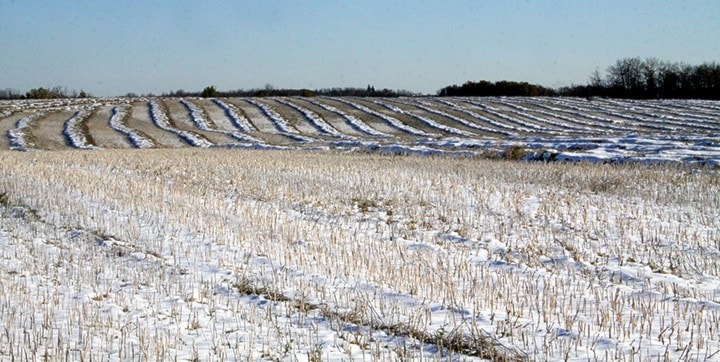Snow, frost and cold temperatures may soon jeopardize what was supposed to be a record crop.
Progress on the harvest in Alberta ground to a halt two weeks ago with little to nothing being done in the fields since, and likely not much finished in the near future, according to Harry Brook, crop information specialist with Alberta Agriculture and Forestry (AAF).
“The problem is we are experiencing some average to below average temperatures and what farmers really need right now is days in the mid to high teens at least,” Brook said.
“The excessive amount of snow some portions of central Alberta received is still on the ground or covering the swath and as the days get shorter, the opportunities for drying those crops are getting less and less.”
In the region, about 40 per cent of the overall harvest is still in the field — either swathed or still standing — with Brook stating the eastern side of the region could see some harvesting going on soon if the slow drying trend continues for a few more days.
“The weather forecast is slightly more favourable, which could allow some farmers out east to get out and harvest because the snow on the swaths has melted and the ground is getting drier due to the wind being able to get at it,” he stated, adding much of the western side of the region has more snow due to more trees and other breaks that don’t allow for wind to get at the land very well.
“I think you will see producers, especially those with canola still standing, try to get out to harvest because you simply can’t afford to lose a crop that’s so expensive to get in the ground. Even at moisture levels of 13 or 14 per cent, with the temperatures we are seeing now you can safely store canola for about 60 days and that will leave farmers with enough time to dry what they have in the bin.”
Brook explained that even cereal crops could come off and be stored safely for a time at around 17 or 18 per cent and then dried.
“Those crops are going to worth far more now, even after having the expense of drying it, than leaving it over the winter and it being worth nothing come spring. That happened five years ago and most of it was left worthless,” he said.
“The markets are already anticipating that much of the predicted record harvest for this year won’t be coming in, so prices have been starting to climb.”
There have been reports that farmers have been encouraged to bring in some crops that are excessively wet, meaning 20 per cent or more moisture, but Brook believes those are likely one-offs and due mainly to elevator companies needing product to fulfill their contracts.
“What would be good for everyone is if a chinook was strong enough to make its way this far north, then they could get the crops into the bin, since the longer they remain in the field, the greater the risk there is that farmers could lose it all,” he added.
